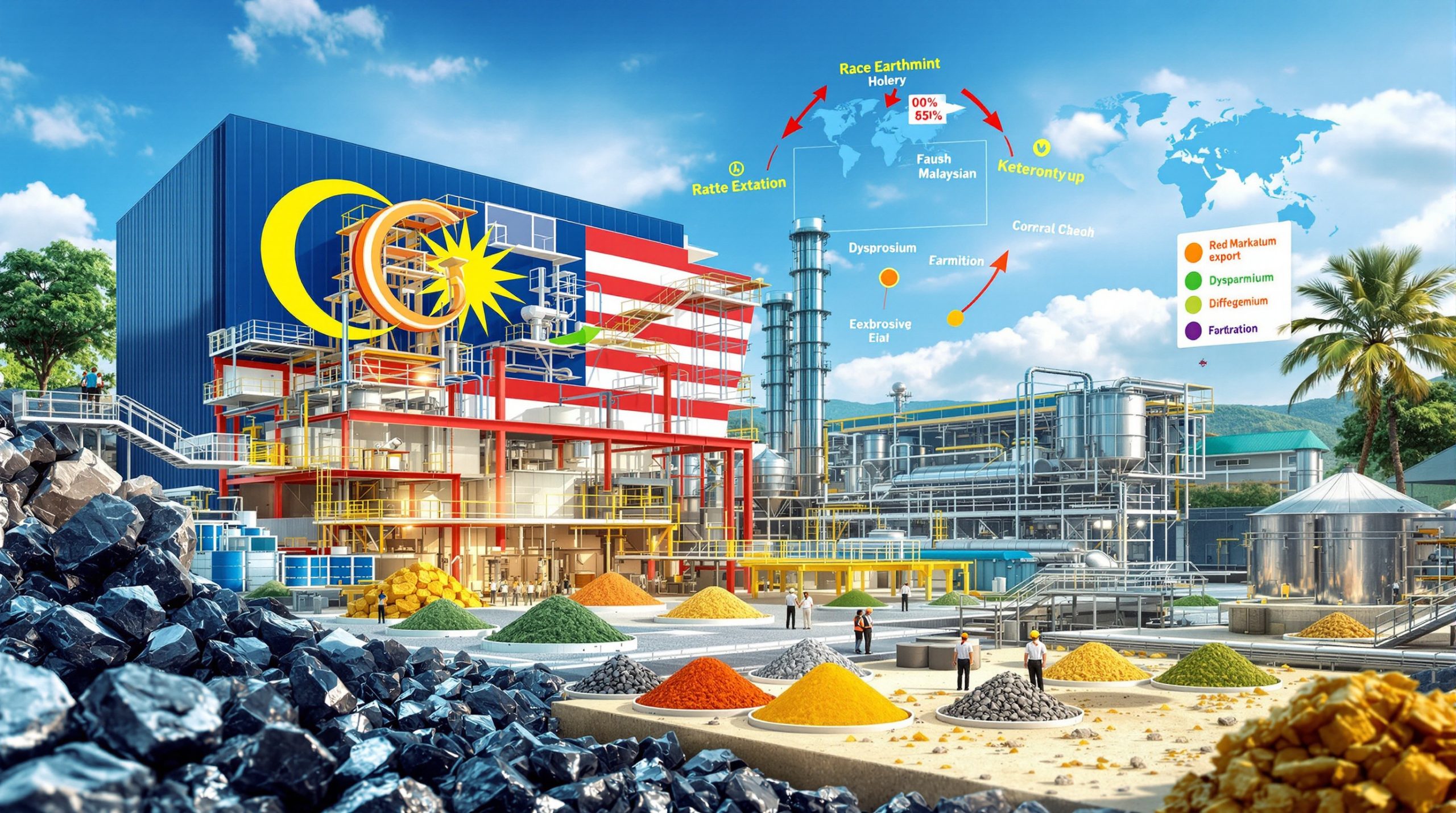Understanding Rio Tinto's Governance Transformation
Rio Tinto's recent board restructuring marks a significant shift in corporate governance strategy, moving from a complex 14-member board structure to a more streamlined composition designed to enhance operational efficiency. This transformation represents more than administrative change; it signals a fundamental realignment of how the global mining giant approaches strategic decision-making and accountability.
The downsizing aligns with Rio Tinto's broader organizational simplification announced in August 2025, where the company consolidated its operations into three core business units: Iron Ore, Copper, and Aluminium & Lithium. This structural evolution enables faster consensus-building and clearer responsibility frameworks across the organization's diverse commodity portfolio.
Key restructuring metrics include:
- Board reduction from 14 members to approximately 11 members
- 21% decrease in board size during the transitional period
- Elimination of redundant oversight positions while maintaining specialized expertise
- Enhanced focus on energy transition metals and sustainable mining practices
Strategic Rationale Behind the Downsizing
The governance restructuring directly supports Rio Tinto's operational model transformation, creating alignment between board oversight and business unit structure. Each of the three divisions operates within distinct market dynamics, requiring specialized strategic guidance that the new board composition better addresses.
Rio Tinto CEO Simon Trott emphasized the strategic importance of this change, stating that a simplified business structure with sharper focus on compelling opportunities will enable new standards of operational excellence and value creation. The restructuring brings greater accountability and focus to teams, underpinned by a more disciplined approach to operational performance and capital investment.
The three-division model creates distinct competitive advantages:
| Division | Market Focus | Strategic Positioning |
|---|---|---|
| Iron Ore | Steel production demand | Stable cash generation foundation |
| Copper | Energy transition infrastructure | High-growth market exposure |
| Aluminium & Lithium | Lightweight materials and batteries | Future-focused commodity positioning |
This structure enables Rio Tinto board changes to deliver enhanced responsiveness to commodity-specific market conditions while maintaining integrated strategic oversight across the portfolio.
New Directors Joining Rio Tinto's Board
Ben Wyatt's Strategic Appointment
Ben Wyatt's appointment as Senior Independent Director represents a strategic enhancement to Rio Tinto's governance structure, specifically addressing coordination challenges between the company's UK headquarters and Australian operational base. His role focuses on Australian board engagement while maintaining oversight of UK-based operations, bridging potential gaps in strategic communication and execution.
Wyatt's appointment fills the position previously managed by Sharon Thorne, who has transitioned to chair the Audit & Risk Committee following Simon Henry's departure. This reshuffling demonstrates Rio Tinto's commitment to maintaining governance continuity while optimising expertise allocation across critical oversight functions.
Geographic governance enhancement includes:
- Dedicated senior independent director focus on Australian operations
- Strengthened connection between London headquarters and major production centres
- Improved alignment between international strategy and local operational execution
- Enhanced stakeholder engagement across Rio Tinto's primary geographic markets
Susan Lloyd-Hurwitz's Sustainability Leadership
Susan Lloyd-Hurwitz joins Rio Tinto's Sustainability Committee, bringing recognised expertise in transformational leadership focused on cultural change, gender equity, and diversity and inclusion initiatives. Her appointment directly addresses the mining industry's increasing emphasis on environmental, social, and governance outcomes.
Lloyd-Hurwitz replaces Martina Merz on the Sustainability Committee, ensuring continuity in ESG oversight while introducing fresh perspectives on stakeholder engagement and responsible mining practices. Her background in cultural transformation aligns with Rio Tinto's ongoing efforts to strengthen social licence to operate across its global portfolio.
Sustainability committee priorities under new leadership:
- Cultural Change Management: Implementing organisation-wide transformation initiatives
- Gender Equity Programmes: Advancing diversity targets and inclusive workplace practices
- Community Engagement: Strengthening relationships with local stakeholders and Traditional Owners
- Environmental Compliance: Ensuring adherence to evolving regulatory frameworks
- ESG Reporting Standards: Meeting investor expectations for comprehensive sustainability disclosure
Directors Stepping Down from Rio Tinto's Board
Simon Henry's Conclusion of Eight-Year Tenure
Simon Henry concluded his directorship in October 2025 after serving on Rio Tinto's board since April 2017, representing approximately 8.5 years of governance contribution during a period of significant commodity market volatility and operational expansion. His departure marks the end of substantial leadership continuity in financial oversight and risk management.
During his tenure, Henry chaired the Audit & Risk Committee, overseeing critical financial governance functions including regulatory compliance, internal audit effectiveness, and risk management framework implementation. His service period coincided with major commodity price fluctuations, operational technology investments, and enhanced ESG compliance requirements.
Sharon Thorne has seamlessly assumed Henry's Audit & Risk Committee responsibilities, ensuring uninterrupted financial oversight and maintaining institutional knowledge within the governance structure. Furthermore, this transition demonstrates Rio Tinto's commitment to leadership continuity during organisational change.
Martina Merz's Strategic Career Pivot
Martina Merz's decision to step down from Rio Tinto's board reflects her strategic focus on innovation ecosystem development and other supervisory roles outside the company. Her departure creates opportunities for fresh expertise while allowing her to pursue specialised roles in technology advancement and industrial innovation.
Merz's exit from the Sustainability Committee provides space for Susan Lloyd-Hurwitz's appointment, bringing different perspectives on cultural transformation and stakeholder engagement. This transition maintains committee effectiveness while introducing complementary expertise areas.
Board departure implications:
- Opportunity for specialised expertise introduction
- Maintenance of governance continuity through planned transitions
- Strategic reallocation of director focus areas
- Enhanced alignment between board composition and business priorities
Impact of Rio Tinto Board Changes on Operations
How Will Enhanced Decision-Making Efficiency Work?
The streamlined board structure fundamentally transforms Rio Tinto's strategic decision-making processes, enabling more agile responses to market conditions and investment opportunities. With fewer members requiring consensus, the company can implement strategic pivots and capital allocation decisions with reduced deliberation time while maintaining robust oversight standards.
Operational efficiency improvements include:
- Faster consensus-building through reduced group decision dynamics
- Clearer accountability structures aligned with three-division operating model
- Improved strategic focus on most compelling growth opportunities
- Enhanced capital allocation discipline across commodity portfolios
The smaller governance structure better supports Rio Tinto's technology-driven operational improvements, including automation initiatives and productivity enhancement programs. Consequently, board members can provide more focused oversight on critical transformation areas while reducing administrative overhead, particularly through AI-driven mill optimization and other technological advances.
ESG Integration and Strategic Alignment
Rio Tinto board changes strengthen environmental, social, and governance integration through dedicated committee positioning and specialised expertise enhancement. Susan Lloyd-Hurwitz's sustainability committee appointment ensures board-level accountability for responsible mining practices and stakeholder engagement outcomes.
The restructured governance framework positions ESG considerations as integral to strategic decision-making rather than compliance afterthoughts. This alignment supports Rio Tinto's positioning within the evolving regulatory landscape and investor expectations for comprehensive sustainability performance, particularly regarding decarbonisation benefits across operations.
Strategic ESG priorities include:
- Climate change risk assessment and mitigation strategies
- Community impact monitoring and stakeholder relationship management
- Diversity and inclusion programme implementation and measurement
- Environmental compliance across global operations
- Responsible mining practice development and deployment
Financial Implications of Governance Restructuring
Cost Optimisation Through Streamlined Structure
Rio Tinto board changes contribute to the company's broader cost optimisation strategy by eliminating redundant governance positions while maintaining essential oversight capabilities. The reduced board size decreases administrative overhead, committee coordination costs, and decision-making complexity without compromising strategic guidance quality.
Cost efficiency elements:
- Reduced board member compensation and related expenses
- Decreased committee administration and coordination costs
- Streamlined governance reporting and communication requirements
- Optimised meeting scheduling and decision-processing timelines
These governance efficiencies complement Rio Tinto's operational excellence initiatives, supporting the company's focus on capital discipline and shareholder value creation. In addition, the cost savings, while not specifically quantified, contribute to overall organisational efficiency improvements.
Alignment with Capital Allocation Strategy
The restructured board better supports Rio Tinto's disciplined approach to capital investment and operational performance optimisation. With clearer accountability structures and reduced decision latency, the company can respond more effectively to commodity price movements and market opportunity emergence.
Investment strategy advantages:
| Area | Improvement | Strategic Benefit |
|---|---|---|
| Decision Speed | Reduced consensus requirements | Faster market response capability |
| Capital Discipline | Enhanced accountability | Improved investment returns |
| Strategic Focus | Clearer priorities | Better resource allocation |
| Risk Management | Streamlined oversight | More effective risk mitigation |
Positioning Rio Tinto for Future Growth
Energy Transition Market Positioning
Rio Tinto board changes align governance structure with the company's strategic emphasis on energy transition metals, particularly copper and lithium production expansion. The streamlined decision-making framework enables faster responses to emerging opportunities in battery materials and renewable energy infrastructure development.
The three-division operating model, supported by the restructured board, positions Rio Tinto to capitalise on global decarbonisation trends while maintaining traditional commodity strength in iron ore markets. This balanced approach provides stability during energy transition acceleration, complementing broader industry evolution trends.
Growth positioning elements:
- Copper division focus on energy infrastructure demand growth
- Lithium expansion aligned with battery technology advancement
- Iron ore stability providing cash generation foundation
- Technology integration supporting operational excellence across all divisions
Geographic Diversification and Regulatory Navigation
Ben Wyatt's appointment as Senior Independent Director strengthens Rio Tinto's ability to navigate complex regulatory environments across multiple jurisdictions while maintaining operational flexibility. His focus on Australian board engagement enhances coordination between global strategy and local implementation requirements.
This geographic governance enhancement supports Rio Tinto's operational presence across Australia, Americas, and other regions, ensuring cultural awareness and regulatory compliance while maintaining strategic coherence. However, the approach addresses stakeholder relationship management and social licence to operate considerations.
Innovation and Technology Integration Capability
The restructured board composition supports Rio Tinto's technology-driven transformation through members bringing expertise in digital innovation, automation, and sustainable mining practices. This foundation enables continued investment in productivity enhancement and operational efficiency improvements.
Technology integration priorities:
- Autonomous mining equipment deployment and optimisation
- Predictive maintenance systems and operational intelligence
- Carbon reduction technologies and environmental monitoring
- Supply chain digitisation and efficiency enhancement
What Challenges Will Rio Tinto Face During the Governance Transition?
Managing Organisational Change Complexity
Rio Tinto board changes occur simultaneously with operational consolidation into three business units, creating potential coordination challenges as new governance structures establish effectiveness. Clear communication channels and defined responsibility frameworks become critical during this transitional period.
The company must balance governance evolution with operational continuity, ensuring that strategic oversight remains effective while new structures develop institutional knowledge and working relationships. This transition requires careful change management and stakeholder communication, particularly considering broader industry consolidation trends.
Transition management considerations:
- Communication protocols between new board members and operational teams
- Knowledge transfer from departing directors to new appointees
- Stakeholder relationship continuity during governance changes
- Strategic planning alignment across restructured oversight framework
Market Volatility Navigation
Rio Tinto's streamlined board must navigate ongoing volatility in iron ore, copper, and lithium markets while positioning for long-term growth opportunities. The reduced board size requires members to possess broader expertise across multiple commodity sectors and market dynamics.
| Market Challenge | Board Response Requirement | Strategic Approach |
|---|---|---|
| Commodity Price Volatility | Rapid decision-making capability | Enhanced market monitoring and response protocols |
| Regulatory Changes | Compliance expertise across jurisdictions | Specialised committee oversight and local engagement |
| ESG Expectations | Sustainability performance accountability | Integrated ESG decision-making framework |
| Technology Disruption | Innovation strategy guidance | Technology investment prioritisation and implementation |
Stakeholder Relationship Management
The governance restructuring requires careful management of relationships with shareholders, regulators, communities, and other stakeholders who may have established connections with departing board members. Continuity in stakeholder engagement becomes essential for maintaining trust and operational effectiveness.
Stakeholder management priorities:
- Shareholder communication regarding governance changes and strategic benefits
- Regulatory relationship continuity across multiple jurisdictions and commodity sectors
- Community engagement maintenance particularly around ESG commitments and local operations
- Industry partnership preservation during leadership transition periods
Strategic Outlook for Rio Tinto's Governance Evolution
Rio Tinto board changes represent a calculated transformation designed to enhance operational agility while maintaining robust governance standards and stakeholder accountability. The combination of experienced leadership retention and strategic new appointments positions the company for sustainable growth across its diversified commodity portfolio.
The restructuring addresses contemporary mining industry challenges through improved decision-making efficiency, enhanced ESG integration, and stronger alignment between global strategy and local operational requirements. For instance, this governance foundation provides the flexibility needed to capitalise on energy transition opportunities while managing traditional commodity market dynamics.
Key success factors for the restructured governance framework:
- Effective integration of new directors and their specialised expertise areas
- Successful transition from departing members while preserving institutional knowledge
- Enhanced coordination between board oversight and operational execution
- Continued stakeholder trust and engagement during organisational evolution
The streamlined structure supports Rio Tinto's positioning within evolving industry landscapes, from energy transition acceleration to increased ESG regulatory requirements. As the company navigates these complex market conditions, the governance evolution provides essential strategic flexibility and operational responsiveness.
This analysis is based on publicly available information and Rio Tinto's official announcements regarding board changes and strategic implications.
Looking to Capitalise on Strategic Corporate Transformations in Mining?
Discovery Alert's proprietary Discovery IQ model delivers instant alerts on significant ASX mineral discoveries, helping investors identify actionable opportunities as major mining companies restructure and position for growth in key commodities like copper and lithium. Begin your 30-day free trial today to stay ahead of market-moving announcements and gain the edge needed for both short-term trades and long-term investment positioning in the evolving mining sector.




